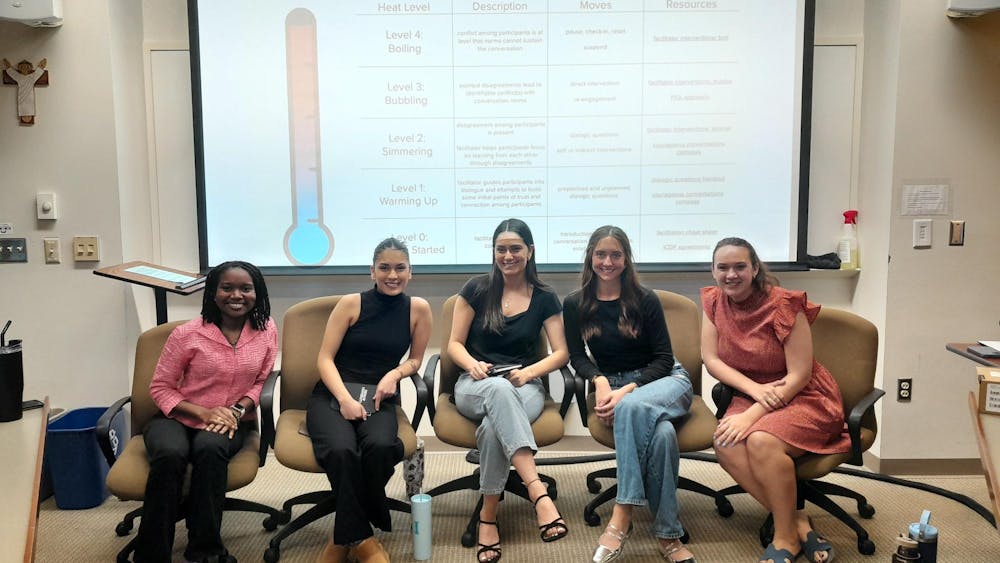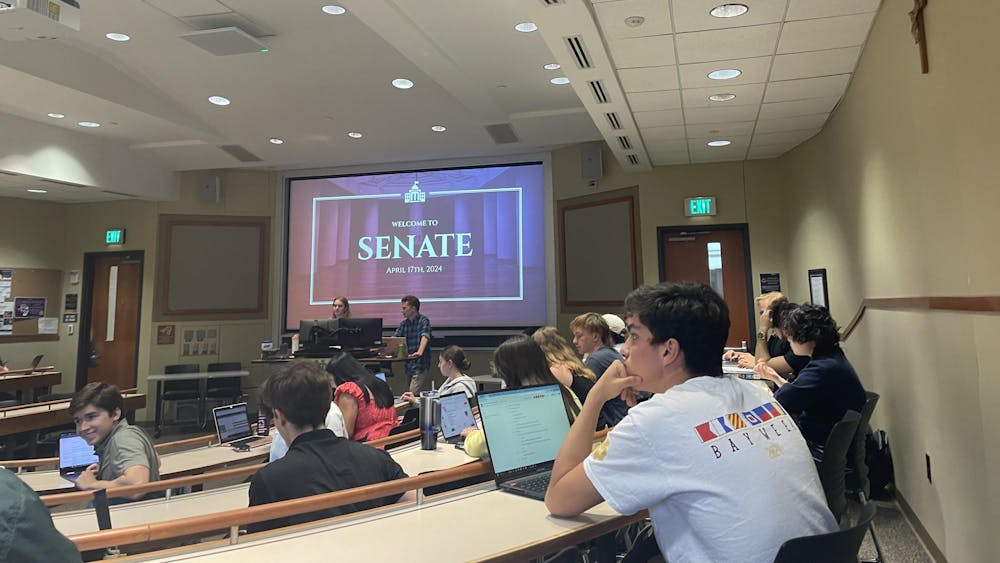On Wednesday, Notre Dame hosted GIS (Geographic Information Systems) Day, which is an annual event to bring together GIS users at Notre Dame and the South Bend community. The day was co-hosted by the Center for Research Computing and the Center for Digital Scholarship at Hesburgh Library.
Milan Budhathoki, one of the events co-organizers, said GIS is a system that works with locational data.
“Locational data would be if you say ‘I want a bunch of Starbucks locations within one mile from my location,’” he said. “ … There is a variety of data … that comes into a spatial format.”
This data can include demographic data, biological data, engineering data and social science data, Budhathoki said. At Notre Dame, students and professors use GIS for research and teaching.
“Lots of people on campus use GIS or geospatial for their research, so if they want to share their results or data … [GIS] is one way to share that with the community,” Budhathoki said.
GIS Day presented an opportunity to unite all of the people on campus who use GIS at Notre Dame.
“GIS Day is basically about bringing [together] all the GIS users on campus,” he said. “ … We do an annual celebration and try to bring all the GIS users or those who are interested in using GIS together to learn from other users.”
Part of the motivation for the event is to attract new users for GIS at Notre Dame, Budhathoki said.
“We encourage people to use the technology as much as they can,” he said. “ … This is software that costs money and since we have a license on campus, we want to encourage more GIS users at Notre Dame.”
GIS Day featured two workshops about GIS, a spotlight talk, awards given to students and faculty who use GIS, lighting talks, demos and a celebration with a cake. The spotlight talk this year featured a biology professor who used spatial modeling with prehistoric data, and the cake this year featured a map with the distribution of goats in the United States.
Matthew Sisk, the event’s other co-organizer, said the purpose of GIS Day is to expose people to the concept.
“We hope that new users of GIS will get a better understanding of the possibilities of the technology and existing users will learn some new techniques and meet similar practitioners,” he said.
Budhathoki said he hopes people walk away from the event learning how to use the tool.
“GIS is about creating data, hosting data, data editing, manipulating of data,” he said. “ … People who participated today learned some new technology in the GIS world and how people on campus are using GIS and the takeaway would be how they can use GIS.”
Budhathoki said the event was well-attended with 60 people at the various events throughout the day. The lighting talks were the most popular events.
“The lighting talks are always a good way to highlight a diverse array of projects working with similar tools,” he said.
Sisk said planning the event has been “a passion project” of his for a long time. To plan the event, they “take into account feedback from past years, look at other institutions events and think hard about what might interest people.”













